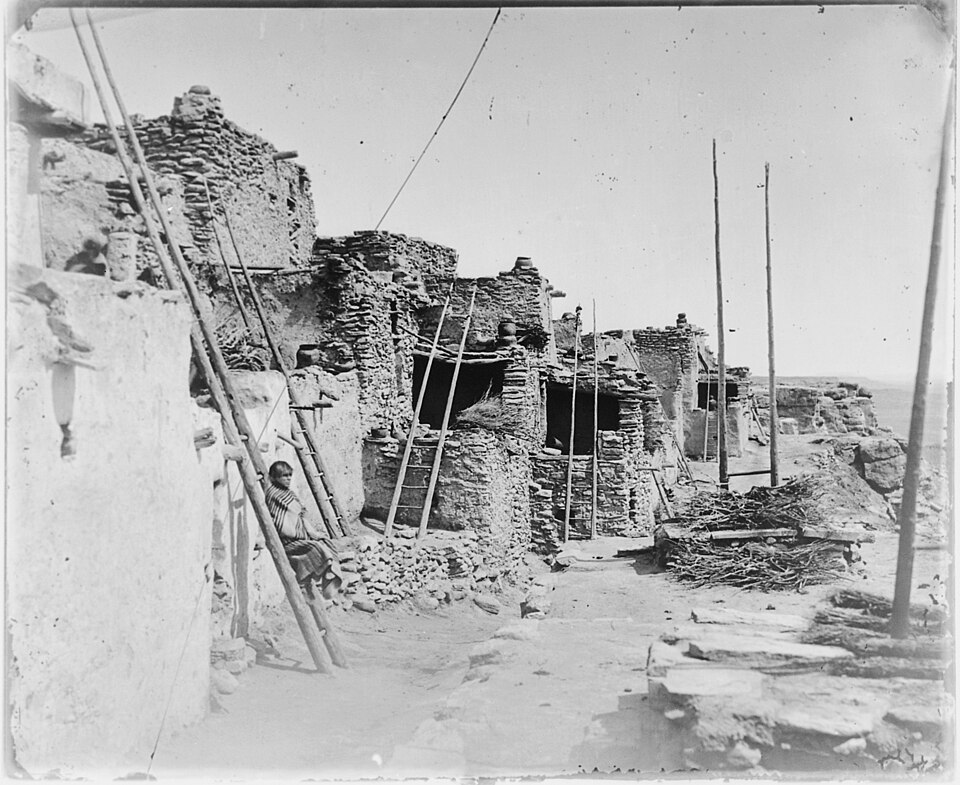Long before European contact, North America was inhabited by a wide variety of Indigenous nations. These nations were independent, self-governing communities with their own distinct cultures, languages, governments, trade networks and belief systems. There was no single “Indigenous culture” across the continent—each group developed its own way of life based on its environment, history, and traditions.
Across forests, deserts, plains, coasts, and tundra, Indigenous peoples built societies that reflected a deep understanding of the land. Some groups lived in large towns with thousands of people; others were more mobile, following seasonal patterns for hunting and gathering. Despite their diversity, these communities shared common features such as close social ties, spiritual connections to the natural world, and systems of cooperation that supported daily life.
The Northeast Woodlands
In the Northeastern part of the continent, Indigenous nations such as the Haudenosaunee (Iroquois), Wampanoag, and Algonquin lived in forested areas with rivers and lakes. These environments supported hunting, fishing, and agriculture. Communities grew staple crops known as the “Three Sisters”: corn, beans, and squash.
One of the most well-known political systems in this region was the Haudenosaunee Confederacy, a union of six nations that used a shared constitution known as the Great Law of Peace. This confederacy allowed each member nation to remain independent while working together on common concerns. Clan mothers held significant power, including the ability to choose or remove chiefs. This complex political structure influenced later ideas about democracy.
Social life was organized by clans, and extended families often lived together in longhouses. Trade was common both within and between nations, and oral storytelling was an important way of passing down history and cultural knowledge.
The Southeast Woodlands
The Southeastern region was home to large and well-organized nations such as the Cherokee, Creek (Muscogee), Choctaw, and Natchez. These societies built permanent villages with central council houses and plazas used for community events and decision-making. The region’s warm climate and fertile soil supported agriculture, especially the cultivation of corn.
Many Southeastern nations had complex political systems. Some used hereditary chiefs, while others were governed by councils of elders or clan representatives. Social structure was often matrilineal, meaning lineage was traced through the mother’s line.
Religious and ceremonial life played a central role in the community. The Green Corn Ceremony, for example, was an annual event that celebrated the harvest and renewed social bonds. Economically, these societies relied on farming, hunting, fishing, and long-distance trade networks that reached across the continent.

The Great Plains
Stretching from modern-day Canada to Texas, the Great Plains were home to nations such as the Lakota (Sioux), Comanche, and Cheyenne. Before horses were introduced by Europeans, many Plains peoples lived in semi-permanent villages and grew crops along rivers. After gaining horses, many groups became more mobile and began to rely heavily on hunting bison.
Bison provided food, clothing, shelter materials, and tools. Plains nations developed tipis—portable, cone-shaped tents made from animal hides—that suited their nomadic lifestyle. Communities organized themselves into bands that came together seasonally for hunting and ceremonies. Leadership was often based on respect, bravery, and skill rather than inheritance.
Although mobility was important, Plains societies had strong spiritual traditions, including the Sun Dance and a deep cultural relationship with animals and the land.
The Southwest
In the dry deserts and mesas of the Southwest, nations such as the Hopi, Zuni, and Apache developed distinct ways of life. The Pueblo peoples built multi-story adobe homes in permanent villages and created complex irrigation systems to farm maize, beans, and squash in the arid soil.
Pueblo communities were organized into clans, and spiritual leaders played central roles in guiding community life. Kivas—ceremonial rooms often built underground—were used for religious rituals and community gatherings.
Other Southwest groups, like the Apache and Navajo (Diné), were more mobile and relied on a combination of farming, hunting, and herding. The Navajo developed an important tradition of weaving, which remains a cultural symbol today.

The Pacific Northwest
Along the coasts of the Pacific Northwest, stretching from Alaska to northern California, Indigenous nations such as the Haida, Tlingit, and Chinook lived in a land rich with forests, rivers, and ocean life. The abundance of resources, especially salmon, supported large permanent villages.
Wood was used to build longhouses, canoes, and totem poles. Totem poles told family histories and shared cultural stories through carvings. Societies in this region developed formal systems of social rank and held potlatches—ceremonial feasts where wealth was distributed to others as a display of generosity and social standing.
Trade and art flourished, with intricate woodworking, basketry, and ceremonial masks being passed down across generations.
Diversity and Independence
Throughout North America, Indigenous nations maintained their own political, social, and economic systems. They did not view themselves as part of a single group, nor were they governed by a common authority. Each nation had its own leaders, laws, and customs. Alliances and trade relationships were common, but so were boundaries and conflicts.
Understanding the diversity and independence of Indigenous societies is essential to accurately learning about North America’s history. These communities were not static or primitive—they were dynamic, innovative, and deeply connected to their regions. Their traditions, governments, and knowledge systems continue today through the voices and leadership of modern Indigenous nations.
